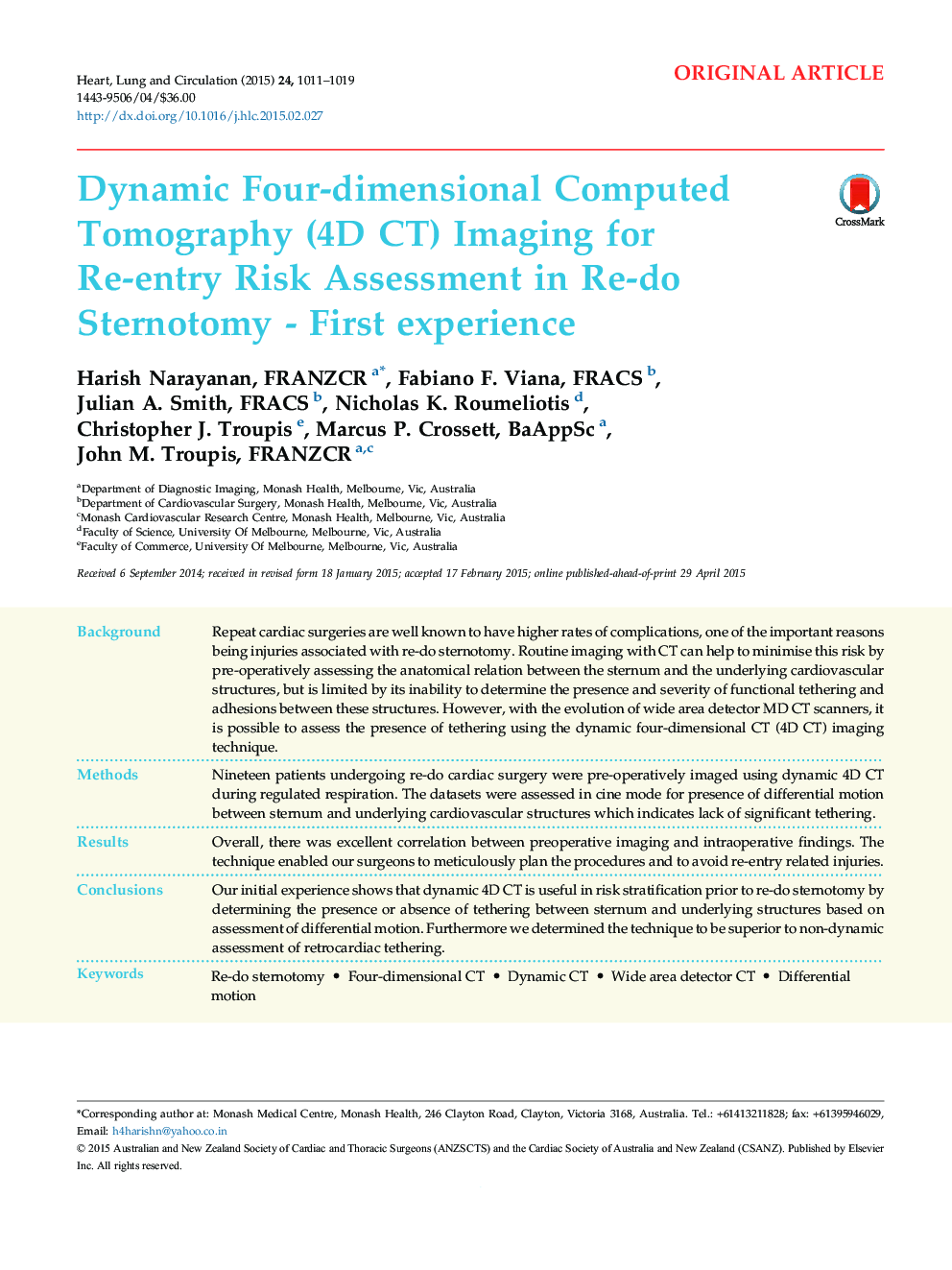| کد مقاله | کد نشریه | سال انتشار | مقاله انگلیسی | نسخه تمام متن |
|---|---|---|---|---|
| 2917727 | 1175669 | 2015 | 9 صفحه PDF | دانلود رایگان |

BackgroundRepeat cardiac surgeries are well known to have higher rates of complications, one of the important reasons being injuries associated with re-do sternotomy. Routine imaging with CT can help to minimise this risk by pre-operatively assessing the anatomical relation between the sternum and the underlying cardiovascular structures, but is limited by its inability to determine the presence and severity of functional tethering and adhesions between these structures. However, with the evolution of wide area detector MD CT scanners, it is possible to assess the presence of tethering using the dynamic four-dimensional CT (4D CT) imaging technique.MethodsNineteen patients undergoing re-do cardiac surgery were pre-operatively imaged using dynamic 4D CT during regulated respiration. The datasets were assessed in cine mode for presence of differential motion between sternum and underlying cardiovascular structures which indicates lack of significant tethering.ResultsOverall, there was excellent correlation between preoperative imaging and intraoperative findings. The technique enabled our surgeons to meticulously plan the procedures and to avoid re-entry related injuries.ConclusionsOur initial experience shows that dynamic 4D CT is useful in risk stratification prior to re-do sternotomy by determining the presence or absence of tethering between sternum and underlying structures based on assessment of differential motion. Furthermore we determined the technique to be superior to non-dynamic assessment of retrocardiac tethering.
Journal: Heart, Lung and Circulation - Volume 24, Issue 10, October 2015, Pages 1011–1019